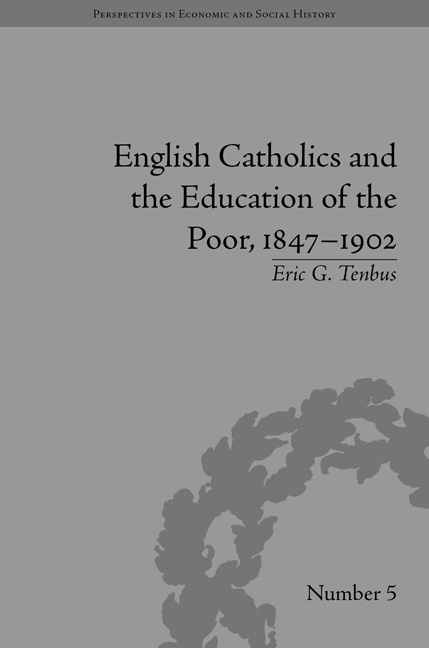Book contents
- Frontmatter
- CONTENTS
- Dedication
- Preface and Acknowledgements
- 1 A Church Divided and the Educational Solution
- 2 The Status of Catholic Education at Mid-Century and the Catholic Educational Philosophy
- 3 Educational Obstacles to Overcome
- 4 English Catholics and the Politics of Education, 1847–70: Preparing for Battle
- 5 English Catholics and the Politics of Education, 1870: The Battle Begins
- 6 English Catholics and the Politics of Education, 1871–90: Engaging With the Enemy
- 7 English Catholics and the Politics of Education, 1891–1902: A Strategy for Success
- 8 Catholic Education and Identity after the Balfour Act: The Battle Ends but the Fight Continues
- Notes
- Works Cited
- Index
2 - The Status of Catholic Education at Mid-Century and the Catholic Educational Philosophy
- Frontmatter
- CONTENTS
- Dedication
- Preface and Acknowledgements
- 1 A Church Divided and the Educational Solution
- 2 The Status of Catholic Education at Mid-Century and the Catholic Educational Philosophy
- 3 Educational Obstacles to Overcome
- 4 English Catholics and the Politics of Education, 1847–70: Preparing for Battle
- 5 English Catholics and the Politics of Education, 1870: The Battle Begins
- 6 English Catholics and the Politics of Education, 1871–90: Engaging With the Enemy
- 7 English Catholics and the Politics of Education, 1891–1902: A Strategy for Success
- 8 Catholic Education and Identity after the Balfour Act: The Battle Ends but the Fight Continues
- Notes
- Works Cited
- Index
Summary
The Status of Catholic Education at Mid-Century
From the years prior to Catholic Emancipation to mid-century, the state of Catholic education, much like the Catholic community itself, existed in a decentralized, irregular and poverty-stricken condition. This was a time of rising Irish immigration into London and the western port cities but before the great wave of immigration induced by the Irish famine. Without an established Church hierarchy with an organizational centre, Catholic England and Wales remained in the decentralized mission status that had emerged from the penal era following the tumultuous sixteenth and seventeenth centuries. Educational provision was haphazard at best. Yet one historian has shown that despite the disorganized and muddled state of schools prior to 1847, the Catholic community was slowly creating an embryonic system of Sunday and day schools from a variety of funding sources to provide education for some of the Catholic children crowding the Irish slums. More recently, Brian Carter has shed more light on the condition of Catholic charitable efforts and, specifically, education in the first half of the nineteenth century by highlighting the importance of the Catholic middle and working classes and the relative absence of the Catholic aristocracy in that benevolent work.
The year 1838 witnessed an upswing of bigotry towards Catholics from both the Protestant-influenced press and Protestant organizations such as the proselytizing Reformation Society.
- Type
- Chapter
- Information
- Publisher: Pickering & ChattoFirst published in: 2014



